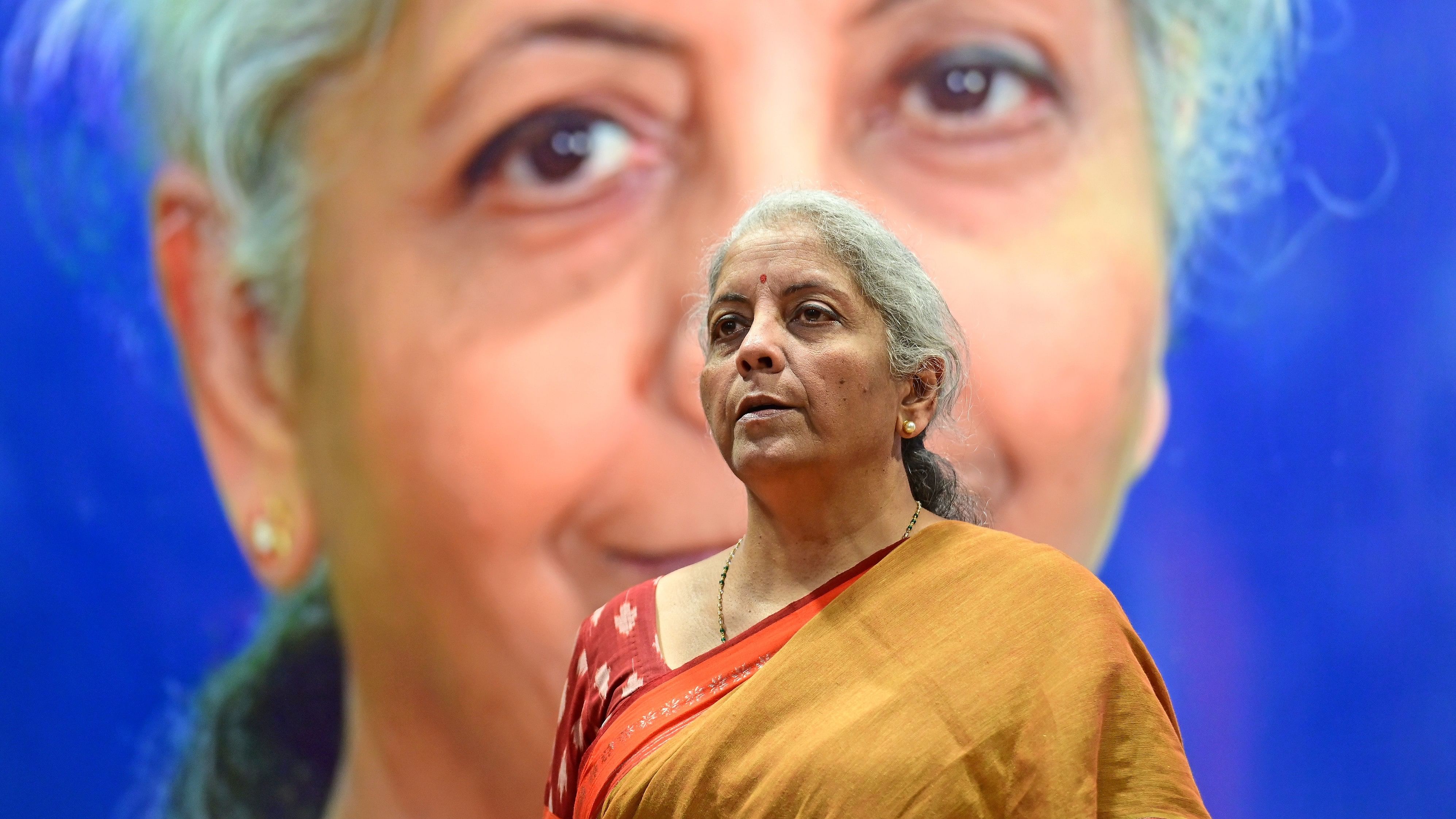
Finance Minister Nirmala Sitharaman
Credit: DH Photo
Bengaluru: Finance Minister Nirmala Sitharaman, on Monday, accused the erstwhile United Progressive Alliance (UPA) government of fiscal mismanagement and said that the Manmohan Singh administration did ‘window dressing’ to hide the true picture of the central government’s finances.
In a series of posts on X, Sitharaman claimed that the net market borrowings of the centre had gone up 4.5 times during the the 2004-2014 period, when the UPA was in power, compared to ‘upto 2.6 times under the NDA government despite the Covid-19 pandemic.’
“The UPA government did ‘window dressing’ to hide its high fiscal deficit without maintaining the integrity of the fiscal numbers. Fiscal deficit for 2008-09 would have been 7.9% instead of 6.1% as officially stated,” Sitharaman said.
The minister said that over Rs 1.9 lakh crore was kept off the books in the five years from financial year 2005-06 to 2009-10, mostly in the form of special bonds to oil marketing companies, fertiliser companies, and Food Corporation of India (FCI).
“Including these off-budget borrowings would have severely increased the fiscal and revenue deficit numbers,” she said.
It should be remembered that off-budget borrowings have been a reality in the Narendra Modi government as well. Sitharaman decided to gradually end below-the-line accounting when she became the Finance Minister in 2019.
The NDA government’s off-budget borrowing peaked at Rs 1.62 lakh crore in 2018-19, and exceeded Rs 1 lakh crore in the two subsequent years - Rs 1.48 lakh crore in 2019-20 and Rs 1.21 lakh crore in 2020-21. Off-budget borrowing finally ended from 2022-23 onwards.
In her statement, which came after the opposition accused the government of loading the country up with unsustainable debt, Sitharaman also asked where the opposition Congress party would fund its poll promises from, in case it came to power.
“Has Congress considered the cost of the lofty promises made in their manifesto? Have they calculated how much the ‘Khata Khat’ schemes will cost fiscally? Will they borrow substantially for them, or will they raise taxes to fund them? How many welfare schemes would Rahul Gandhi shut down to accommodate the fiscal cost of the schemes?” she stated.
“The truth is that our government’s fiscal management is much better than that of the UPA despite facing the pandemic in which substantial resources were used for relief efforts,” Sitharaman added.
She pointed out that the central government’s debt was 52.2% of gross domestic product at the end of 2013-14, and was reduced to around 48.9% in 2018-19. However, due to the measures taken to protect the economy during the pandemic, it increased to 61.4% of GDP in 2020-21, and has come down to 57.1% in 2023-24.
“Post-pandemic, our government pursued a balanced approach to fiscal consolidation while sustaining economic growth. This strategy reduced the fiscal deficit from 9.2% of GDP in 2020-21 to 5.8% in the revised estimates for FY 2023-24. The Interim Budget projects a further reduction to 5.1% in 2024-25,” she said.
Sitharaman pointed out that the centre’s debt is overwhelmingly rupee-denominated, with external borrowings contributing a minimal amount of less than 5%, which signifies that exposure to volatility in exchange rates tends to be on the lower end.